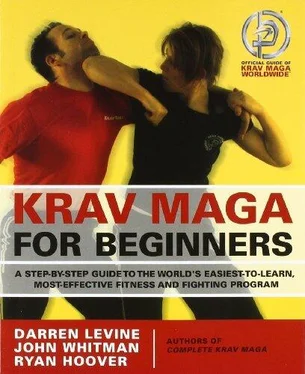
Knee strikes may be applied from different angles. Like a round kick, a round knee starts like the standard strike—relatively straight, and then the hip rolls over. This variation should be practiced after you’ve mastered the basic knee strike; it’s quite effective if your opponent is in front of you but leaves his side open to your attack.
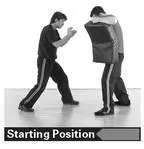
Starting Position:Left-leg-forward fighting stance in close proximity to your opponent.
1Grab your opponent’s right arm and shoulder firmly by grabbing handfuls of skin. Push your right forearm against your opponent’s neck, keeping your elbow down. This prevents your opponent from dropping down and “shooting in” to grab your legs.
2Pull your opponent’s body forward and/or down while bringing your right knee up; roll your hip over in a motion similar to a round kick so that your knee strikes at a more horizontal angle. This strike is normally delivered to the ribs, stomach, or head. Drive your hip forward and up to generate power.
Training Tips:As you learn to deliver both knees, do some slow training exercises with a partner (or a heavy bag) in which you stand close and learn to give both forward knees and round knees, making light contact but always emphasizing the extension of your hip into the strike.
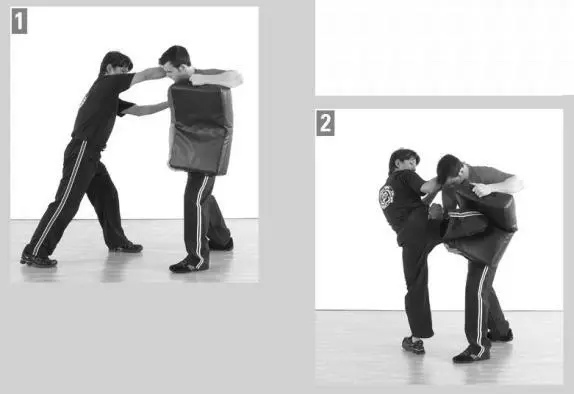
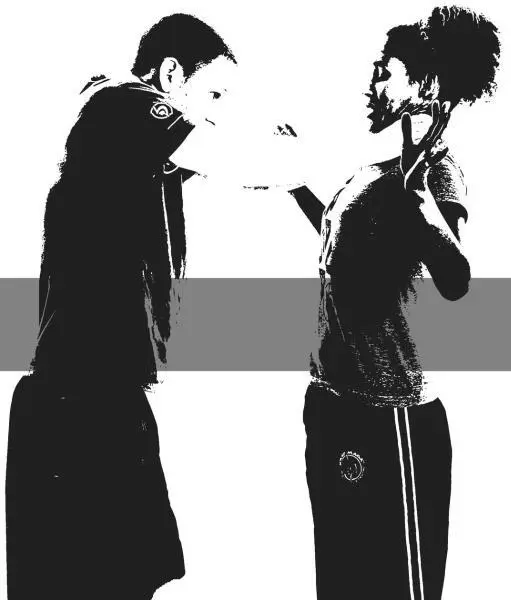
DEFENSES
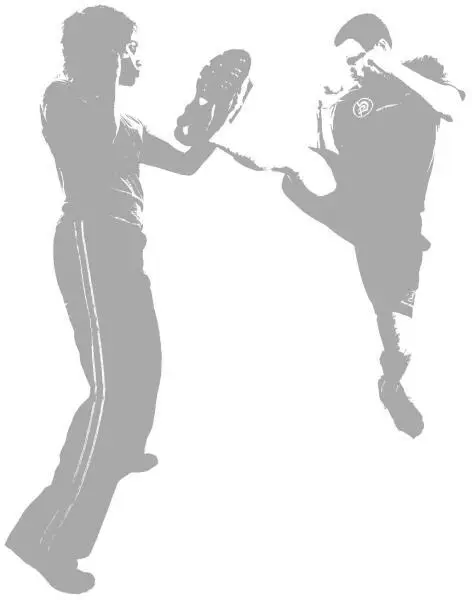
The self-defense sections are organized by types of by attack. Each attack is then broken down by immediate danger, secondary dangers, solution, initial counterattack, neutralizing the attacker, key points, and commonly asked questions . Many defenses will also be accompanied by supplementary teaching tips to further explain the techniques.
Attackis relatively self-explanatory. This is the action taken by the assailant. Defenders should train in a position of disadvantage, often referred to as “neutral,” as previously discussed. The immediate dangerrefers to the real problem of the attack, and what the nature of the attack is designed to do. Secondary dangersare problems that may arise as a follow-up to the primary danger or as a result of the initial defense.
The solutionis the defense itself. This is the technique or response that addresses the immediate danger, while the initial counterattackis the combative designed to stop the ongoing attack. The initial counterattack is what shifts the dynamics of the fight, and it should be delivered simultaneously to the solution or defense, if possible.
Neutralizing the attackerrefers to combatives that follow the initial defense and counter in order to render the attacker unable or unwilling to continue fighting and facilitate escape. Krav Maga recognizes that follow-up combatives should be based on the reaction of the attacker, as opposed to some predetermined sequence of strikes or events. Again, Krav Maga is about problem solving. For example, training to throw a groin kick and then a headbutt is likely not going to be effective or advised in most instances because of the natural reaction to the groin kick. Slow fighting, where a student performs counterattacks at a greatly reduced speed, is often a valuable tool here. It helps students to learn tool and target acquisition (in other words, which vital areas are exposed, and which combatives are most efficient in the moment). Remember, even in slow fighting, the initial pluck should always be performed explosively.
In order to provide a quick reference and review, key pointsare provided at the end of each section, along with commonly asked questions. This section is another key aspect of Krav Maga that differentiates it from other styles or systems. Krav Maga not only welcomes but encourages students to ask questions. This philosophy is how Krav Maga has improved over the years, and how it will continue to improve in years to come. Krav Maga instructors are concerned with preserving lives, not ego or tradition.
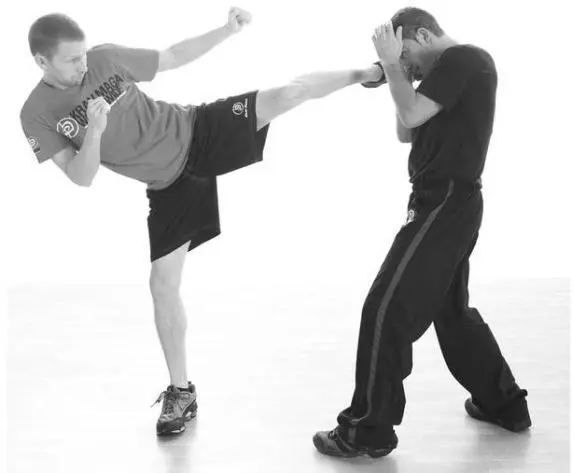
This exercise serves as a basic introduction to outside defenses. “Outside defenses” refer to any defense where our arms move outward, away from the center of our body, and are usually performed against attacks coming from the outside inward, such as hook punches, round kicks, and, later, knife defenses. While the wide attacks used to practice 360 are not the most practical, they do occur on the street. In addition, these attacks are an excellent way for beginners to learn to use not only the defenses, but to develop good vision and fighting spirit. The 360° defenses are based on the body’s instinctive reactions and performed with the fingers extended. This is a relatively instinctive (reflexive) movement, which makes it quick; extending your fingers adds a few inches to the defense.
ATTACK →The attacker swings his arm downward to the head or collar bone; upward to the groin; or horizontally at the body or head. For training purposes, during these early stages, the attacking arm should be fairly wide and easy to see. The defender should train from a neutral position, but may have his hands up. The attacker may strike lightly, but must put some weight behind each attack in order to test the defense. In addition, every attack should actually strike the defender (lightly) if it’s not defended.
With all of the defenses described below, keep the following four principles in mind:
• Keep a 90° bend in your elbow.
• Defend wrist to wrist.
• Use the blade of your arm to defend.
• Defend aggressively, putting weight into your defense (think of attacking the attack).
IMMEDIATE DANGER→ Being struck. The primary danger is being hit.
SECONDARY DANGERS→ Disorientation, balance. If the initial attack is not blocked, the defender may find himself disoriented by the first strike, or knocked off balance, and therefore open to additional strikes.
SOLUTION→ 360° Defense. With all these defense positions, make the movement quickly and then recoil.
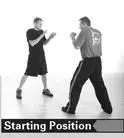
Starting Position:Neutral stance, hands up at shoulder/face level.
Position 1: With your elbow bent 90°, raise your forearm above and slightly in front of your head to defend against an attack coming straight down.
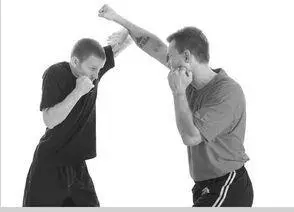
Position 1
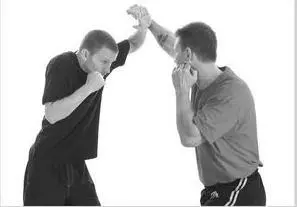
Position 2

Position 3
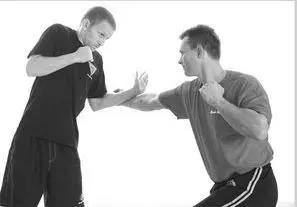
Position 4
Position 2: With your elbow bent 90°, raise your arm at an angle (like the roof of a house—about 30°) to defend against an attack at 45°.
Читать дальше
